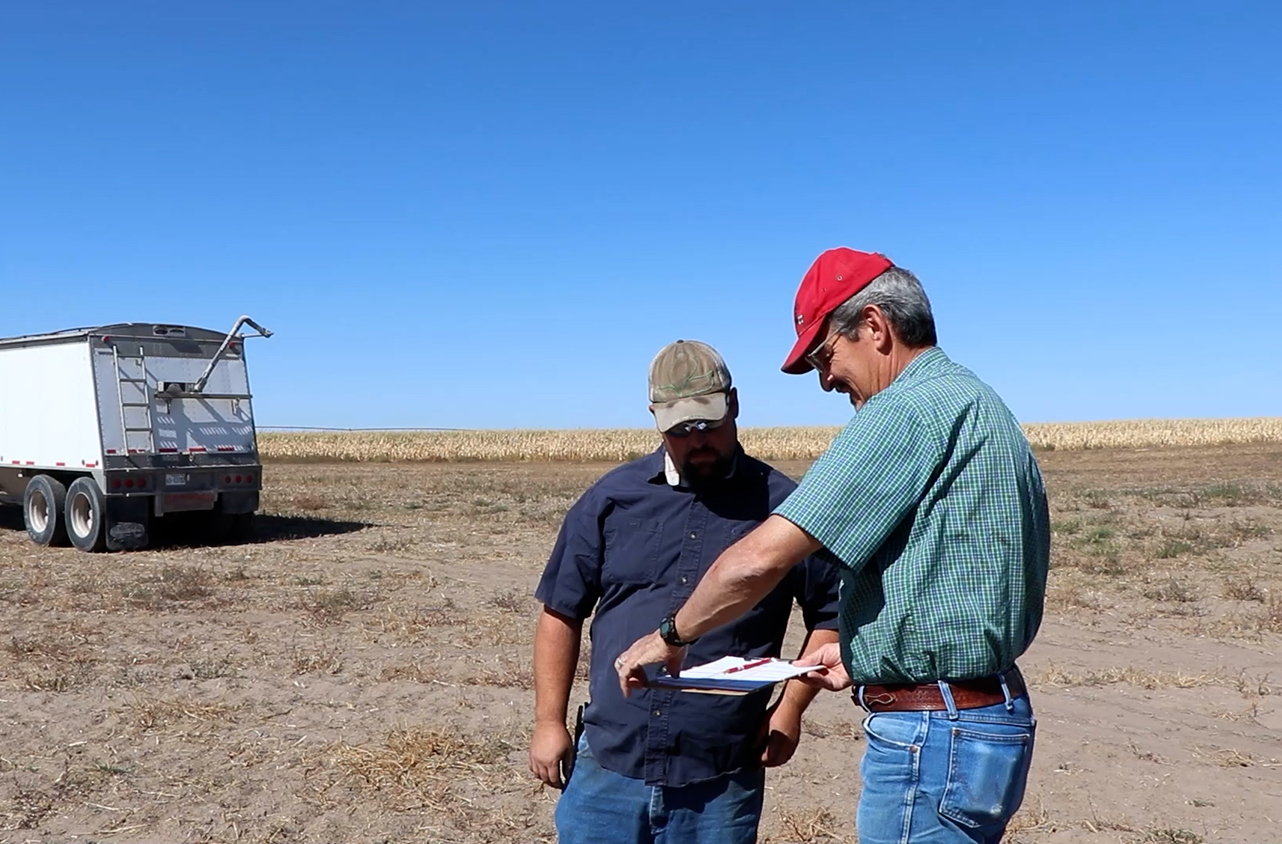![]()

By Chabella Guzman, PREEC Communications
On a warm September day along the edge of the Sandhills in Box Butte County, a combine harvested dry edible beans. The beans were in an On-Farm Research project by John Thomas, Nebraska Extension Educator at Box Butte County, and Tim Hashman, the farmer and driver of the combine. The project looked at a product called Pod Ceal.
“Last year, we had a hailstorm come through before harvest, and it (Pod Ceal) actually helped to keep the pod from shattering,” Hashman said. “This year, I’m hoping we see a sizable reduction in harvest loss.”
Pod Ceal is meant to reduce harvest loss with direct harvest beans. It’s sprayed on during the desiccation process. The coating should make the beans a bit tougher, so the pods don’t shatter and growers don’t lose as many beans in the field. It can also improve the quality of the beans. The product is supposed to help shed moisture. This is helpful with dry bean varieties like Great Northern. In a rainy season, the product will keep moisture out from causing staining or discoloration.
On-Farm Research partners with growers across Nebraska to answer their questions on products, row spacing, planting depths, and more. Pod Ceal is not a new product. It is used by many of the growers of dry edible beans in the Panhandle. “We answer On Farm questions from the population of a given crop, its fertility, water management, and different products that growers can apply to crops. We literally test those in a scientific fashion, and we determine if it’s benefiting the farmer,” Thomas said.
The Pod Ceal project is in its second year, and this year, Hashman and Thomas applied the product to a new field of dry beans. Hashman took over the acres about two years ago, which had originally been alfalfa and grass. The acres have never had dry beans, meaning the disease, and weed pressure would be lower.
“We started breaking it (acres) out into row crops. I had corn last year on the whole thing, and then this year, we’re starting to get into our rotation that we normally do. We chose to put beans down here because of the sandy soil,” he said. The soil is more of a sandy loam, and dry edible beans grow well in soil that has good drainage. The soil is also easy to work with for direct harvest beans. “The sand is easier to float a header on, and we don’t have to worry about dirt clods. We can keep our combine a lot lower, and it just makes harvestability a lot better.
The sandier soil requires management to keep it from eroding. “We’ve changed a few things as far as cover crops. For this particular field of beans, we worked very early, planted oats in it, grew the oat crop up, and then desiccated the oats and no-till the beans straight into the oats,” he said. After harvest, they will be drilling wheat into the ground for irrigated wheat next year and the surrounding fields will have cover crops until next year’s planting season.
Hashman and Thomas will work on the project next year to gather as much information as possible on Pod Ceal’s performance in various soil and weather conditions in western Nebraska. “We want to look at something for about three years before we determine if it’s really a value to our growers,” Thomas said. “There’s just always a lot of variables in farming, the growing season, the year, the variety, and the architecture of the plant. That’s another reason we want to use it multiple times with multiple conditions to see if it really works and if it’s if it’s a value.”
Hashman’s dry bean plot is only one of many studies going on across Nebraska. To find out more about the other studies, visit https://on-farm-research.unl.edu
The annual On-Farm Research meeting will be held on Feb. 27, 2025, at the Knight Museum in Alliance, with information on this year’s project results and others in the Panhandle.
